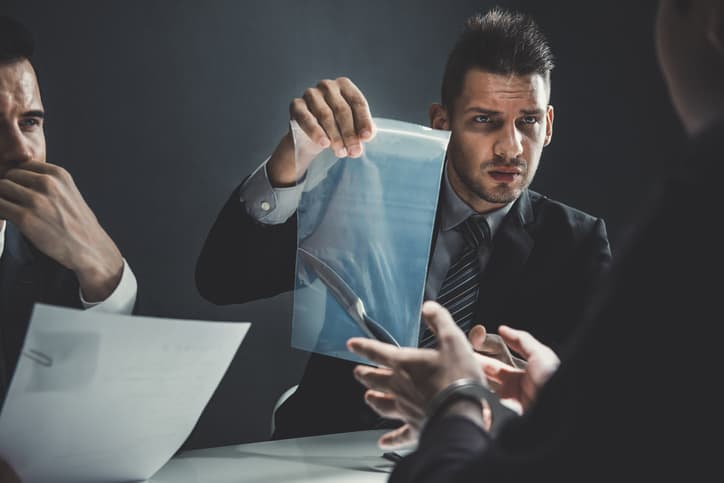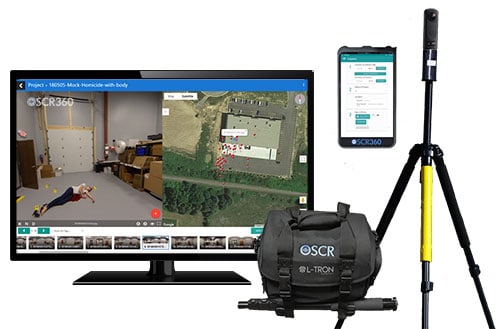What is Admissible Evidence?
The question of courtroom admissibility is a hot topic – and for good reason. Prosecutors require strong evidence to obtain a conviction, whereas defense attorneys are seeking a “not guilty” verdict, or better yet, the case dismissed. When evidence gets thrown out by the court, it’s a huge win for the defense.
When it comes to admitting digital and photographic evidence into a courtroom to be used in a criminal case, there are four criteria each piece of evidence must meet: accuracy, authenticity, originality, and relevancy.
Accuracy: The evidence should represent precisely what was observed firsthand. | Authenticity: The evidence should be verified by a qualified expert, who is willing to testify. |
Originality: The evidence should be presented as it was initially captured. Editing & formatting are not permitted. | Relevancy: The evidence needs to clearly contribute to the case arguments. |
When it comes to an expert’s testimony, admissibility once again comes into question. What makes this topic even more controversial is that U.S. courtrooms don’t all follow the same guidelines. That’s where the benchmark cases of Daubert & Frye come into play.
History of Evidence Admissibility: Daubert & Frye
How does the Court decide whether an expert really is an expert and if the expert’s testimony is scientifically valid?
Almost a century ago, in 1923, the case of Frye v. United States, 293 F. 1013 first examined the methods by which evidence was obtained and whether experts in the field would accept the evidence in question. During the Frye case, the polygraph test was rejected from the courtroom when scientific experts did not generally accept polygraph results as valid. In short, the Court determined that admissibility was based on general acceptance within the scientific community. The Frye Standard was thus established and upheld in courtrooms across the country until many decades later.
In the 1993 case of Daubert v. Merrell Dow Pharmaceuticals, Inc. 509 U.S. 579, the Supreme Court overruled Frye in federal court, and upholds the Daubert Standard to this day. However, states remain divided over the question of Daubert or Frye.
In Daubert, the Court asserted that not only is general acceptance from a relevant scientific community a factor in admissibility, but the science and its application must be examined as well. The following four questions should be considered in addition to general acceptance:
- Has the theory/technique been tested? If not, can it be tested?
- What standards are in place regarding the theory/technique in question?
- Has the theory/technique undergone peer review? Publication?
- What is the error rate? (Known or potential)
If, after thorough examination by the judge, evidence is admitted into the court, the Court must rely on cross-examination, contradictory evidence and ultimately, burden of proof that is established beyond a reasonable doubt.

OSCR360: Inside the Courtroom
OSCR360 starts assisting Officers & Investigators at the crime scene – where the system captures 360-degree, floor to ceiling panoramic photos in just seconds. These photos provide a complete view of the crime scene, as it was found. Ideally, these photos are taken by the first Investigators to arrive at the scene, in order to preserve the environment as much as possible.

The OSCR360 Desktop Software is used to organize and store all of your digital evidence relating to the case. The “Points of Interest” feature within the software, allows digital evidence to be attached directly to the spherical photos. For instance, an image of a fingerprint or the lift card from the scene could be pinpointed to the location (or object) within the spherical photo where Investigators lifted the fingerprint from. Video surveillance footage, body cam footage, audio recordings, text and email files, documents and any other multi-media evidence can be included in an OSCR360 presentation file. OSCR allows for easy cooperation and collaboration between agencies (ie: Law Enforcement Agencies and District Attorney offices) as the presentation is being created.
Once the evidence is organized within OSCR, the virtual presentation is ready for the courtroom. In court, the OSCR presentation provides the courtroom audience with a compelling virtual walkthrough of the crime scene. The jury can see the scene for themselves, and they feel as if they are walking in the investigator’s shoes as the prosecution leads them through the case details.
“You are not only capturing 360-degree photos, but you are capturing geospatial relationships and a sense of scale that are not found with traditional still photos. You can relate to where things are in the scene from the photos you take. You are able to ‘follow’ witnesses through a crime scene and you can bring the visual scene to juries as it was captured instead of verbally describing it.”
– Former member of the Georgia Bureau of Investigation
OSCR360: Is it Admissible?
Yes. The 360-degree spherical photographs captured by OSCR360 are saved in .jpg format with an automated time and location stamp to demonstrate originality and authenticity. The digital evidence that is integrated into the courtroom presentation must follow the same guidelines of accuracy, authenticity, originality and relevancy.
To further ensure admissibility, it is recommended to organize and document each piece of demonstrative evidence that is included in the OSCR project. Pass other agencies and the defense a copy of the OSCR project with the OSCR360 viewer (a viewer-only version of the software).
OSCR has been successfully used in court, including grand jury trials, closing arguments, witness testimonies, as well as for obtaining pleas by presenting the case to the defense.
As a prosecutor, the burden of proof lies with you. An efficient and dynamic courtroom presentation can help you close the case and serve justice.
“[OSCR]360 was used in the prosecution of Jonathan Ortiz for Murder in the Second Degree. It was used during the testimony of a main witness in the case. We were able to have the witness walk through the crime scene with the use of the 360. The jury was able to see the witness’ vantage point of the events that occurred. The witness was able to articulate where all of the parties involved in the crime were located through the use of the 360. We were pleased with the results, since it helped us explain the crime scene to the jury.”
– Assistant District Attorney; Chief, Major Felony Bureau, NY